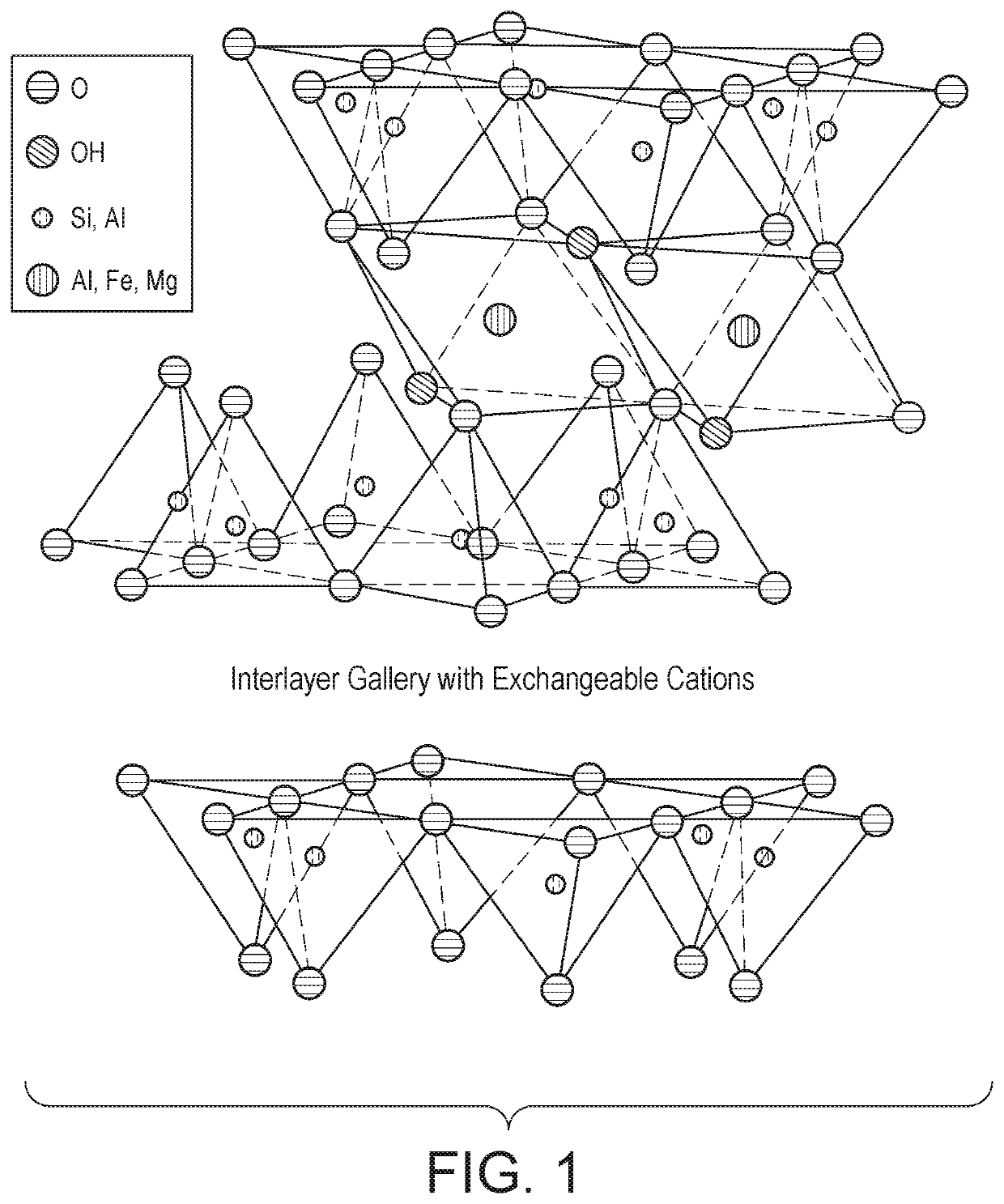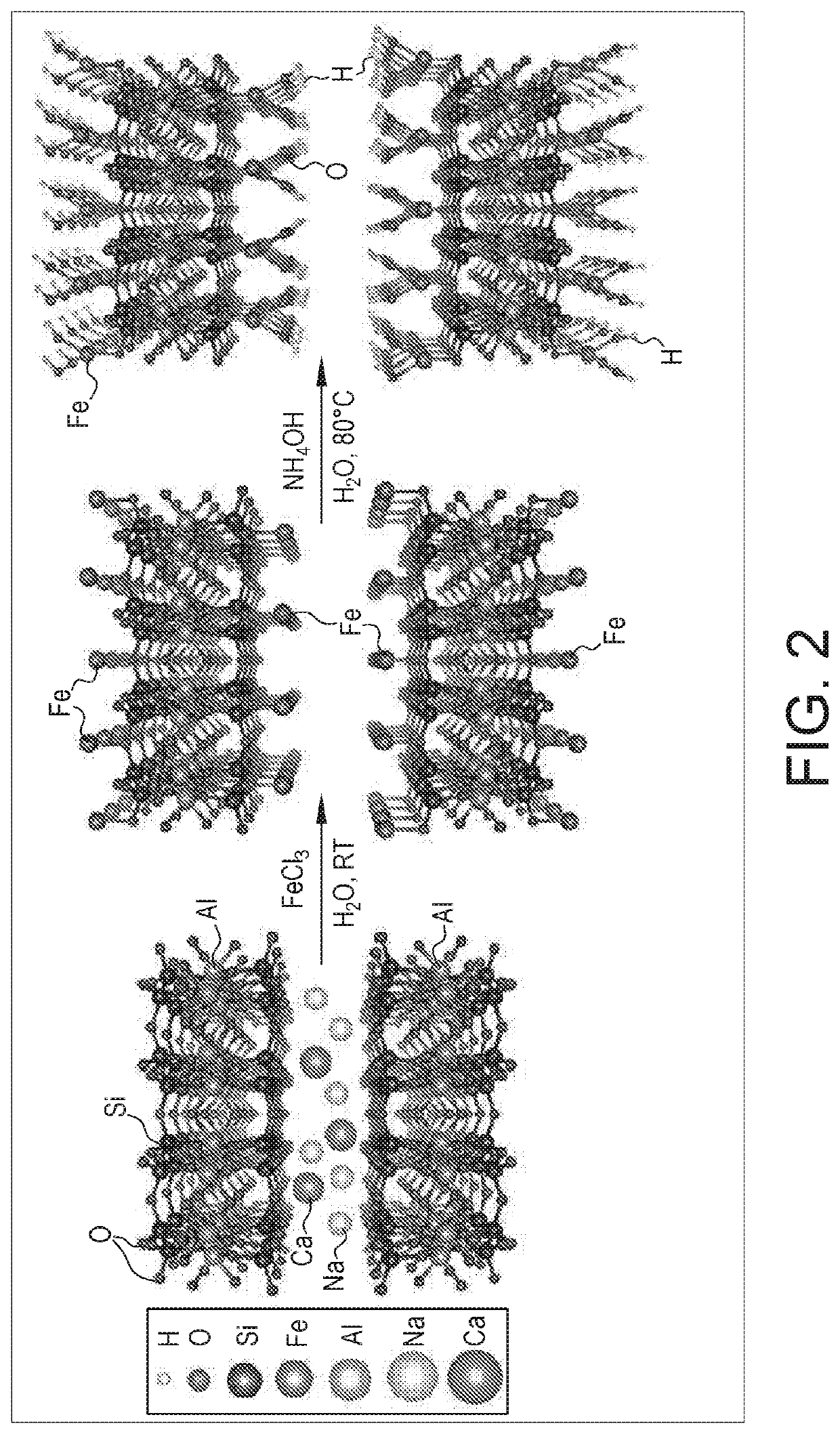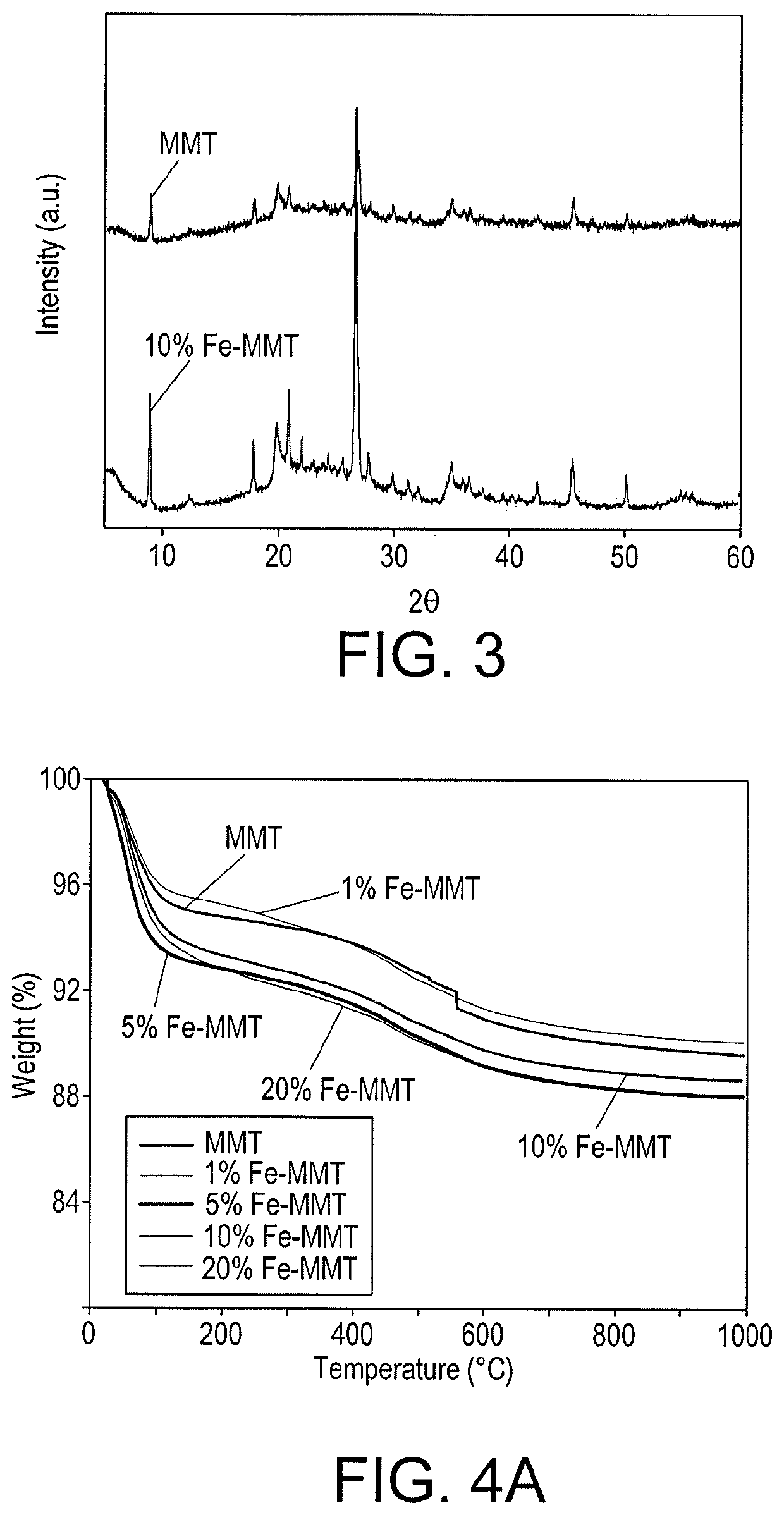Method for adsorption of toxic contaminants from water
a technology of toxic contaminants and adsorption methods, which is applied in the direction of water/sludge/sewage treatment, other chemical processes, chemistry apparatus and processes, etc., can solve the problems of heavy metal contamination of water, long-term health complications of plants, animals and humans, and arsenic contamination of water. , to achieve the effect of improving the adsorption efficiency and reducing the adsorption ra
- Summary
- Abstract
- Description
- Claims
- Application Information
AI Technical Summary
Benefits of technology
Problems solved by technology
Method used
Image
Examples
example 1
Synthesizing HyFe(III)-MMT
[0034]All solutions were prepared from analytical reagent grade chemicals and deionized water (Milli-Q system). Iron (III) chloride hexahydrate (FeCl3.6H2O) and ammonia were obtained from SureChem (Suffolk, England) and VWR Chemicals, respectively. K-10 montmorillonite (MMT) supplied by Sigma-Aldrich Company Ltd. was used as the starting material without any modifications. The cation exchange capacity of the material was found to be 30 meq / 100 g. A stock solution of arsenite (1000 mg / L) was purchased from VWR Chemicals.
[0035]FIG. 2 shows a schematic diagram of the reaction scheme for the preparation of HyFe-MMT according to the instant example. Briefly, 2 g of MMT clay was dispersed in water in a three neck flasks and mechanically stirred at 300 rpm for 15 minutes. Then, the desired concentration of FeCl3.6H2O (1 weight % to 20 weight %) solution was added drop-wise to the MMT clay solution, and the suspension was stirred for another 15 minutes. A diluted a...
example 2
Characterization of HyFe-MMT
[0036]Powder XRD measurements were carried out using a Rigaku Miniflex-600 X-ray diffractometer with Cu Kα radiation (X=0.154 nm). XRD data in the 20 range from 5 to 70° were obtained. The chemical groups in the materials developed were obtained from FTIR data using a FTIR spectrometer (Thermo Fisher Scientific Nicolet iS 10) in the wavenumber range of 4000-500 cm−1. X-ray Fluorescence (XRF) data was collected on a Rigaku ZSX Primus II Wavelength Dispersive XRF to determine the quantitative elemental analysis of the material. The specific surface area of the unmodified and hydroxyiron modified MMT was measured at 77K using N2 as an adsorbate on a Micromeritics ASAP 2020 BET surface area analyzer. TGA of the material was performed using a TGA system (TA instruments SDT Q600) at a heating rate of 10° C. / min. The surface morphology of the samples was carried out using an FEI Quanta 400 environmental scanning electron microscope (ESEM) at 30 kV.
[0037]Transmis...
example 3
Arsenic Adsorption Experiments
[0038]Arsenic adsorption experiments were conducted to determine the adsorption capacity of As(III) on MMT and HyFe-MMT. These experiments were carried out in 50 mL centrifuge tubes containing 20 mL of an As(III) solution to a predetermined amount of MMT or HyFe-MMT. The pH of the solution was adjusted with 0.1 mol / L HCl or 0.1 mol / L NaOH. All of the solutions were mechanically agitated on a shaker at 350 rpm. For the adsorption kinetics and adsorbent dosage experiments, the pH of the initial As(III) solution was not altered, so as to depict a system with no external influence, and was found to be at a pH of 3. All experiments were conducted at room temperature. Kinetics experiments were conducted at time intervals ranging between 0.5 min to 120 min to determine the equilibrium contact time and maximum adsorption capacity.
[0039]The most efficient adsorbent dosage was determined from experiments using different adsorbent amounts ranging from 20 mg to 100...
PUM
| Property | Measurement | Unit |
|---|---|---|
| Temperature | aaaaa | aaaaa |
| Time | aaaaa | aaaaa |
| Time | aaaaa | aaaaa |
Abstract
Description
Claims
Application Information
 Login to View More
Login to View More - R&D
- Intellectual Property
- Life Sciences
- Materials
- Tech Scout
- Unparalleled Data Quality
- Higher Quality Content
- 60% Fewer Hallucinations
Browse by: Latest US Patents, China's latest patents, Technical Efficacy Thesaurus, Application Domain, Technology Topic, Popular Technical Reports.
© 2025 PatSnap. All rights reserved.Legal|Privacy policy|Modern Slavery Act Transparency Statement|Sitemap|About US| Contact US: help@patsnap.com



